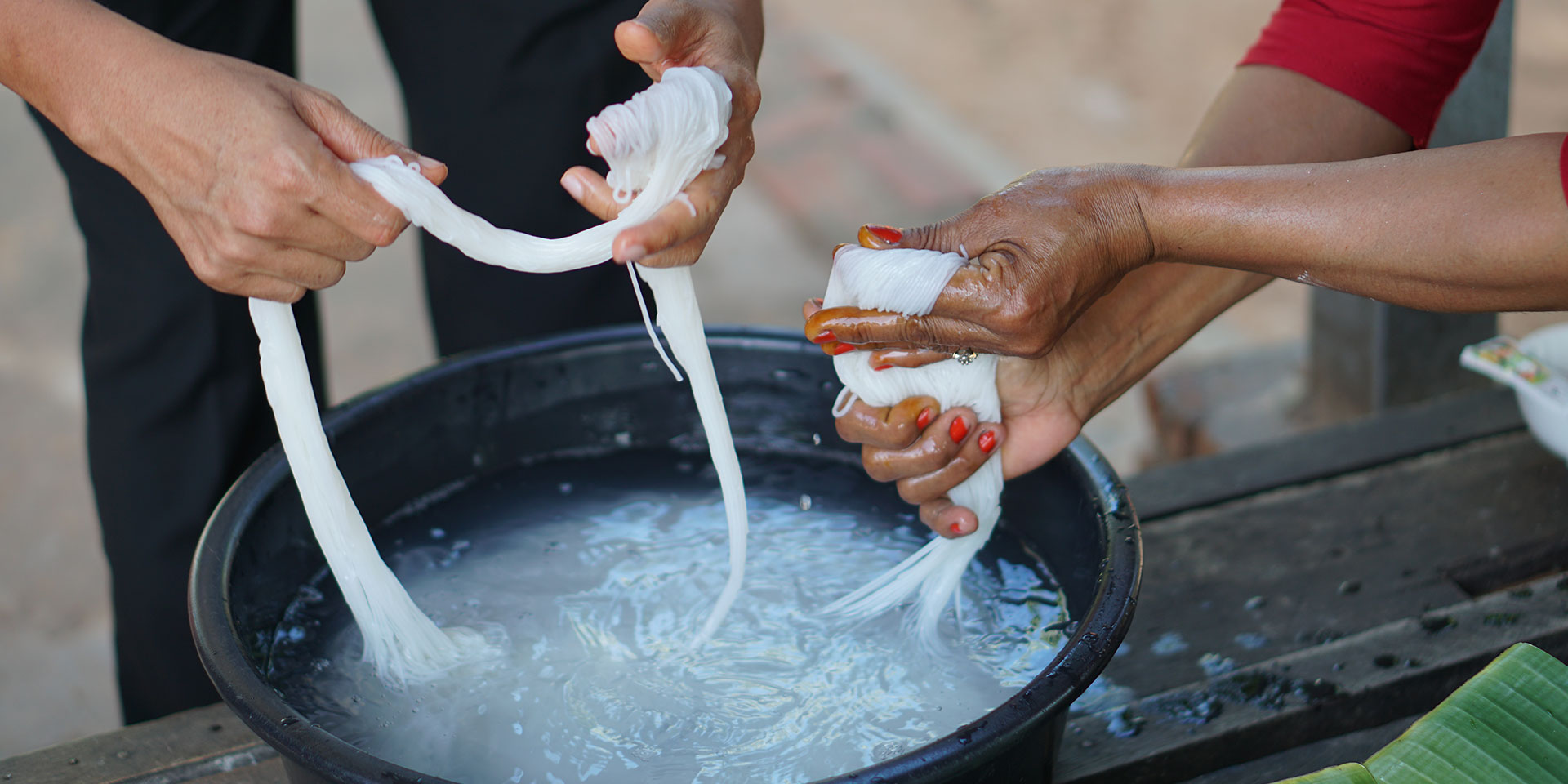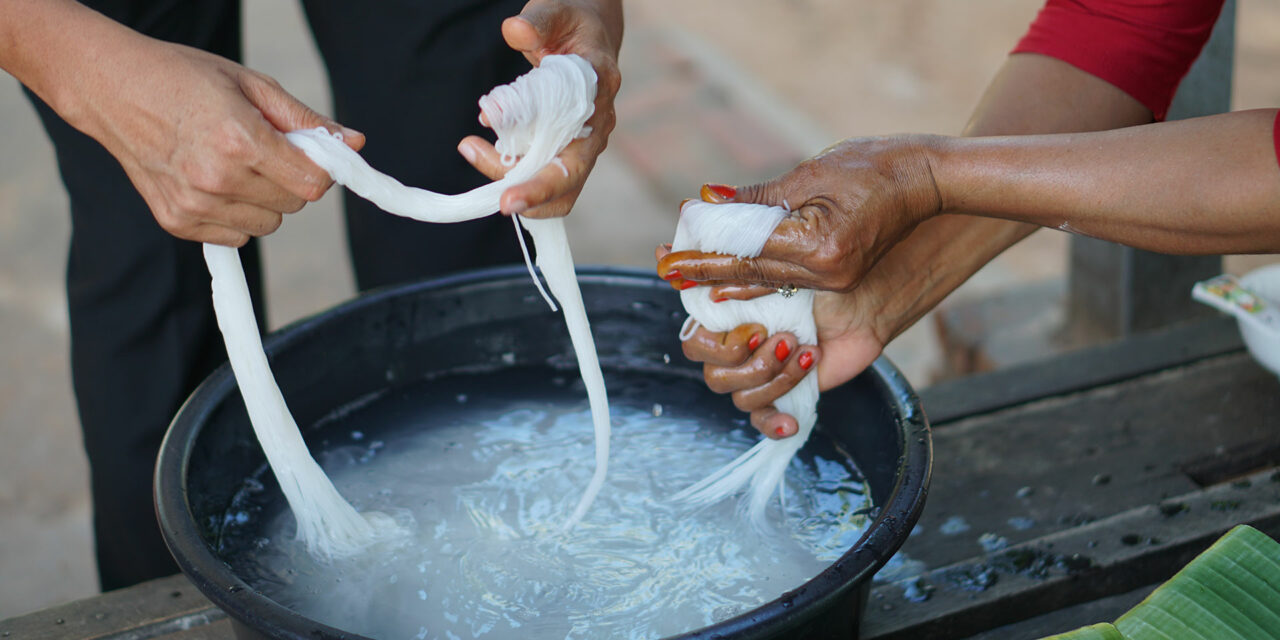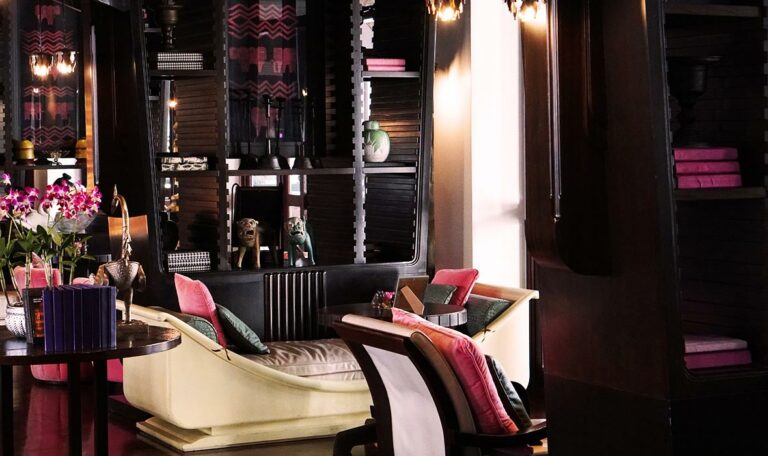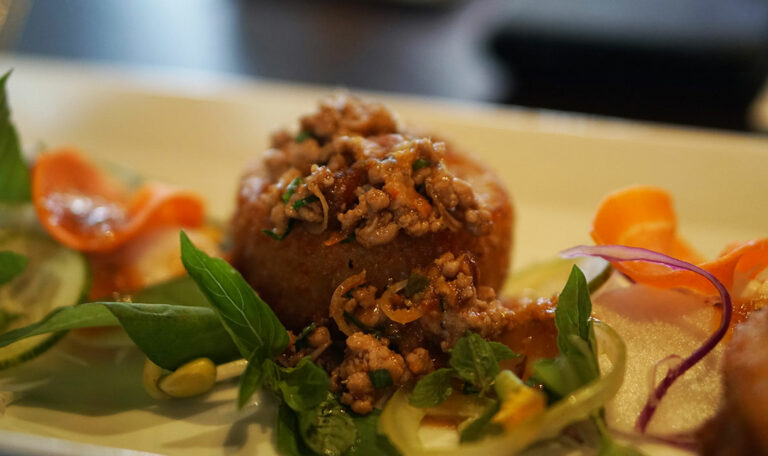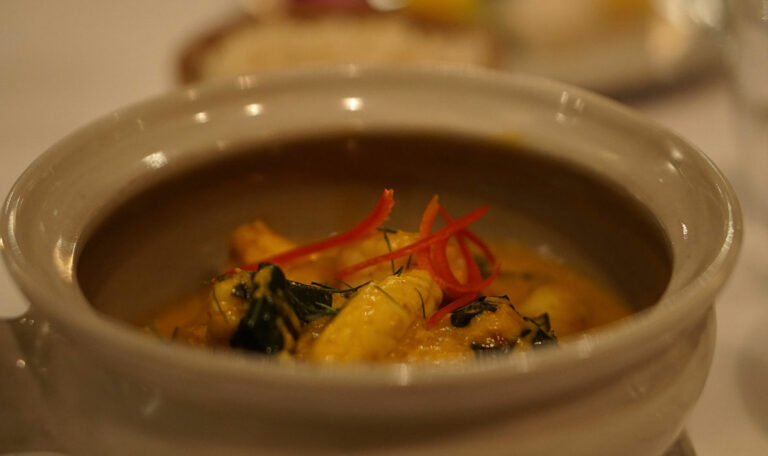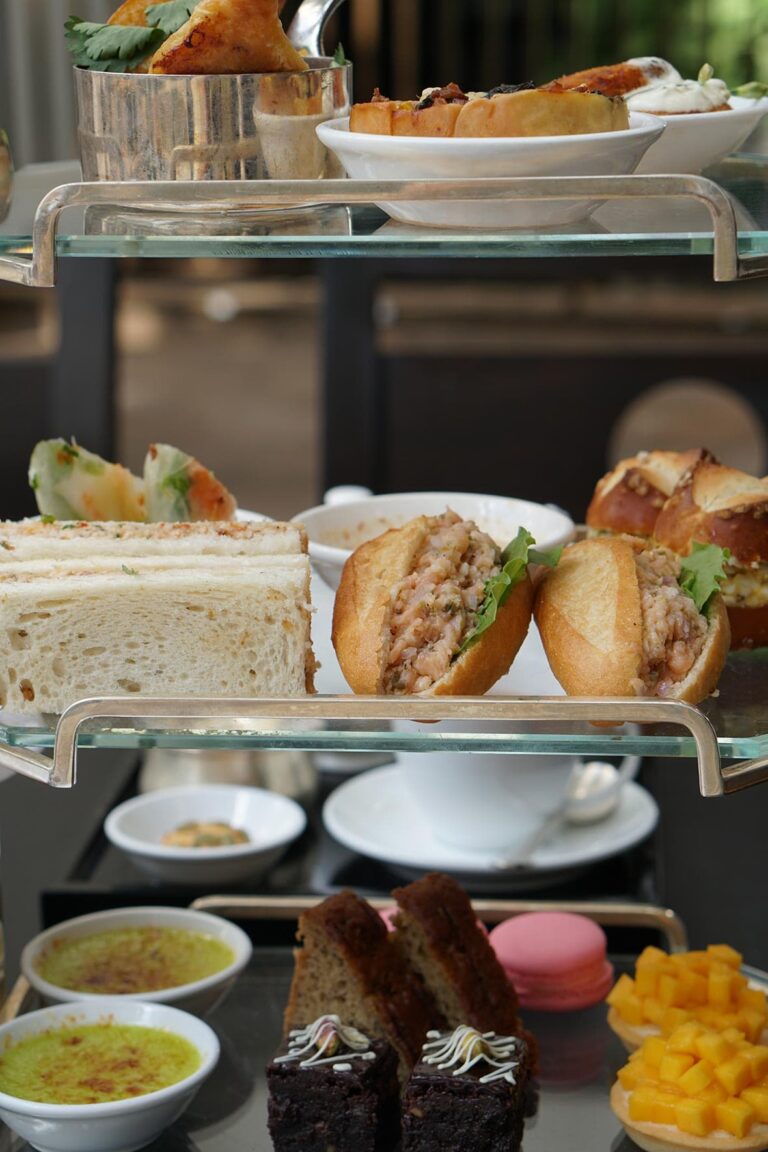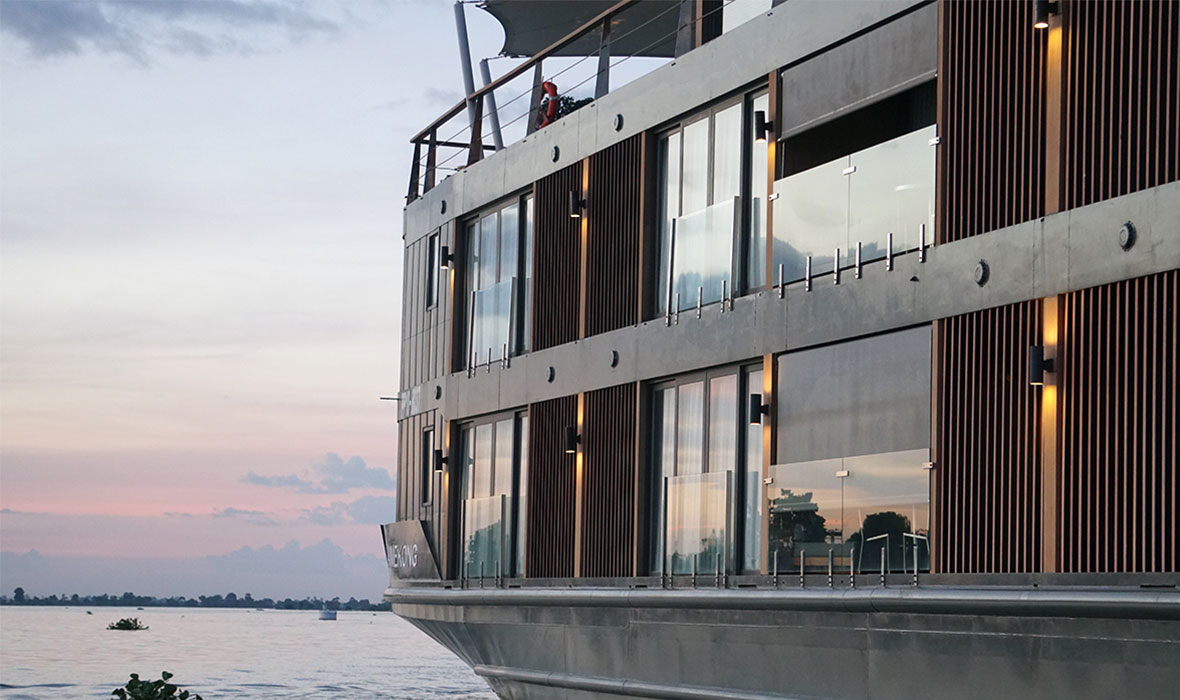Among the names of Amansara and the Belmond, Park Hyatt Siem Reap is one of the most luxurious hotels near the ancient capital of Angkor Wat in Cambodia. And in that hotel is third generation chef Theam Pisith, the brains behind one of the best hotel kitchens in the city. Chef Pisith’s father worked at the Hotel de la Paix, the current Park Hyatt Siem Reap.
“I like something fresh, fresh, fresh,” says Chef Pisith. The Park Hyatt isn’t just unique for its luxury accommodations in this Cambodian tourist hotspot; it also has some very unique dining experiences. But it’s not with the five-star food of The Dining Room or the elegant cocktails of The Living Room with which Chef Pisith and I concern ourselves; it’s with simple num banh chok, traditional Cambodian rice noodles.
Regardless of the venue at the Park Hyatt Siem Reap, Chef Pisith takes sanitation and ethically-farmed animals very seriously – right down to the dark orange (rather than the yellow) of the egg yolks. The organic farm from which the kitchen receives their produce is a farm 35 kilometers away from the downtown luxe hotel, and the dishes cater to everyone from the Khmer cuisine lover to charcoal grilled steaks and an excellent eggs Benedict for brekkie.
“A lot of the Khmer cuisine I bring here, like fresh spring rolls, mango salad – born in Siem Reap – and eggplant salad from when I was a monk for 10 days,” says Chef Pisith, whose Khmer cooking roots go deep. “Amok is one of the best foods for Cambodian.”
ABOVE: Images and dishes from the Park Hyatt Siem Reap.
“My grandma tells me that a thousand years ago, when we make amok at home, we make it in a pot with the sauce, with the coconut milk, and everything,” Chef Pisith says, adding that the clay pot could never survive the travel to other provinces, giving rise to the dry banana leaf amok. “The main course tonight is traditional Siem Reap or Cambodian amok, with the sauce as well. I bring you home today.” The amok lived up to the chef’s plaudits: juicy, bright, flavorsome – and so very soft in texture.
The next day, however, Chef Pisith would leave the surrounds of a five-star kitchen to lead me through Siem Reap on a journey to make an even more traditional Cambodian dish: num banh chok.
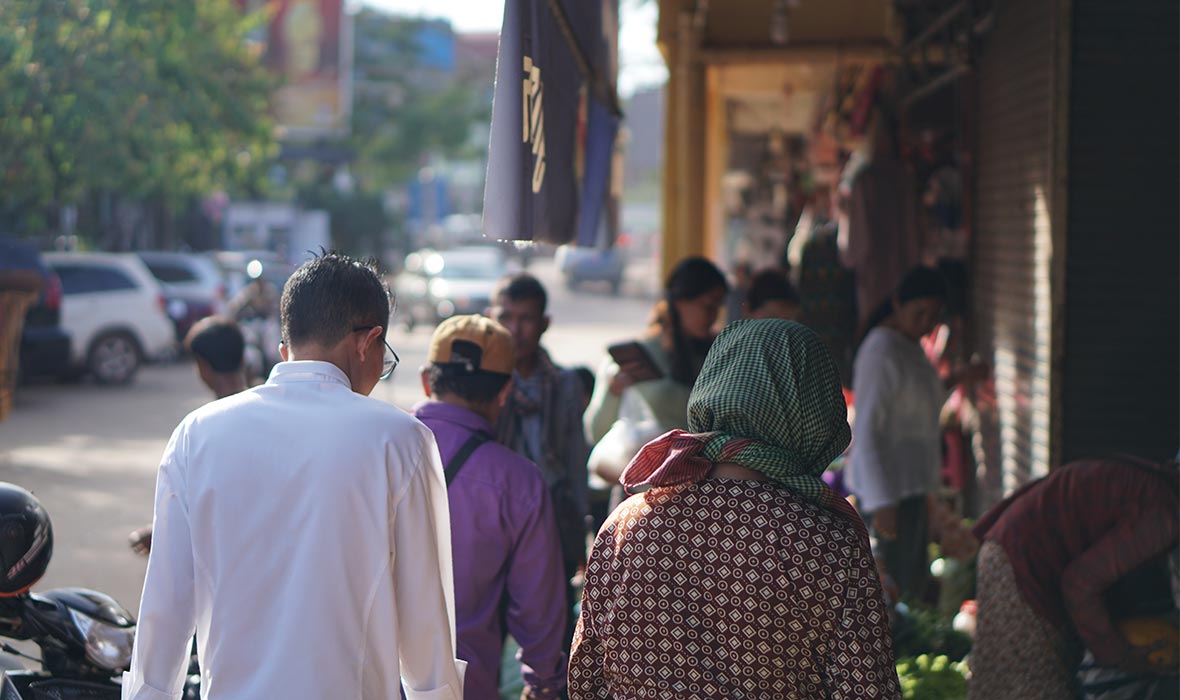
ABOVE: Chef Pisith in the early light of a morning market on the streets of Siem Reap.
Num banh chok, or nom bon chok, is a style of Cambodian vermicelli, often eaten for breakfast. The traditional making of this dish is labor-intensive when done in the traditional way, and it is one of the many dining experiences offered by the Park Hyatt Siem Reap.
Everyone knows that the way to see Angkor Wat is early in the morning, but we forego that advice and instead hit the morning produce market by tuk-tuk before heading into the countryside. Siem Reap is relatively flat; the scenery of the tuk-tuk ride is that of trees and the occasional Angkor Wat wonder that rides by in a flash.
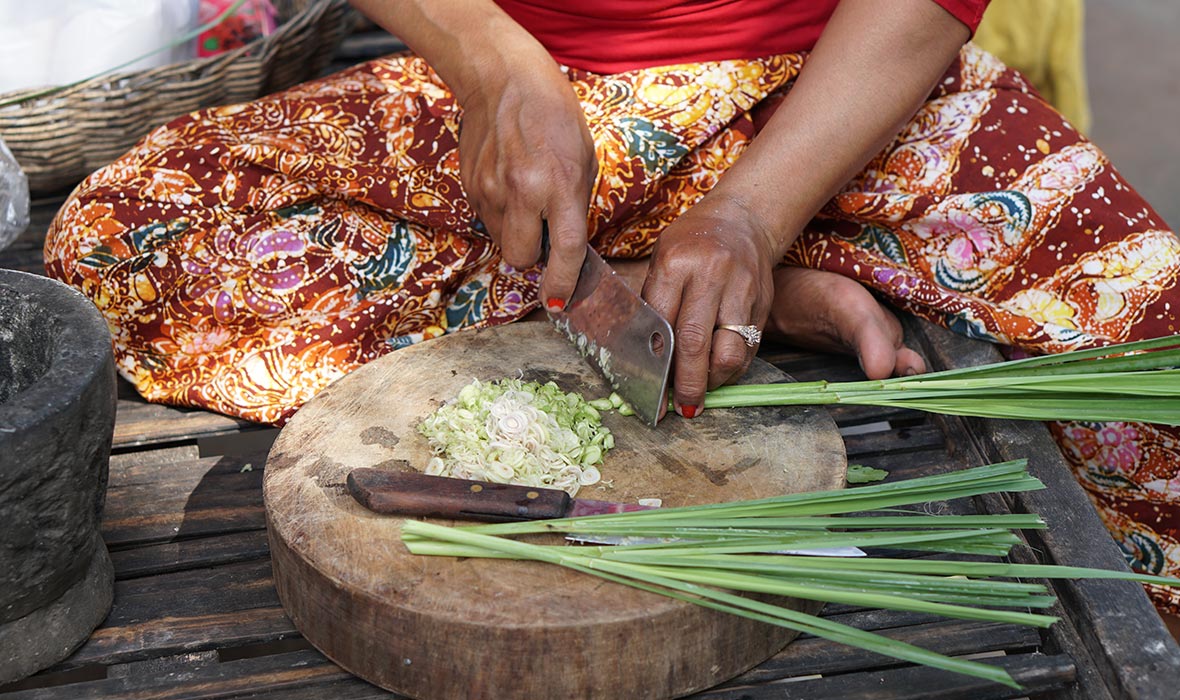
ABOVE: Outside of Siem Reap, a host cuts veggies as the num banh chok boils.
The broadly colonial chic of the Park Hyatt is replaced with worn homes, a place where getting permission to build is hard, and making a living is even more difficult. These are the grounds around Cambodia’s most famous tourist attraction, and travelers will find no luxury respite out here.
The tuk-tuk pulls into a home with four ladies working on their daily num banh chok, producing kilos at a time and selling it for a few dollars.
“The first place I called didn’t want to do this today. They don’t want photographs,” Chef Pisith tells me. “But these girls were happy to let us join.” The “girls” are family and friends of all ages involved in the num banh chok process – a process that is anything but simple.
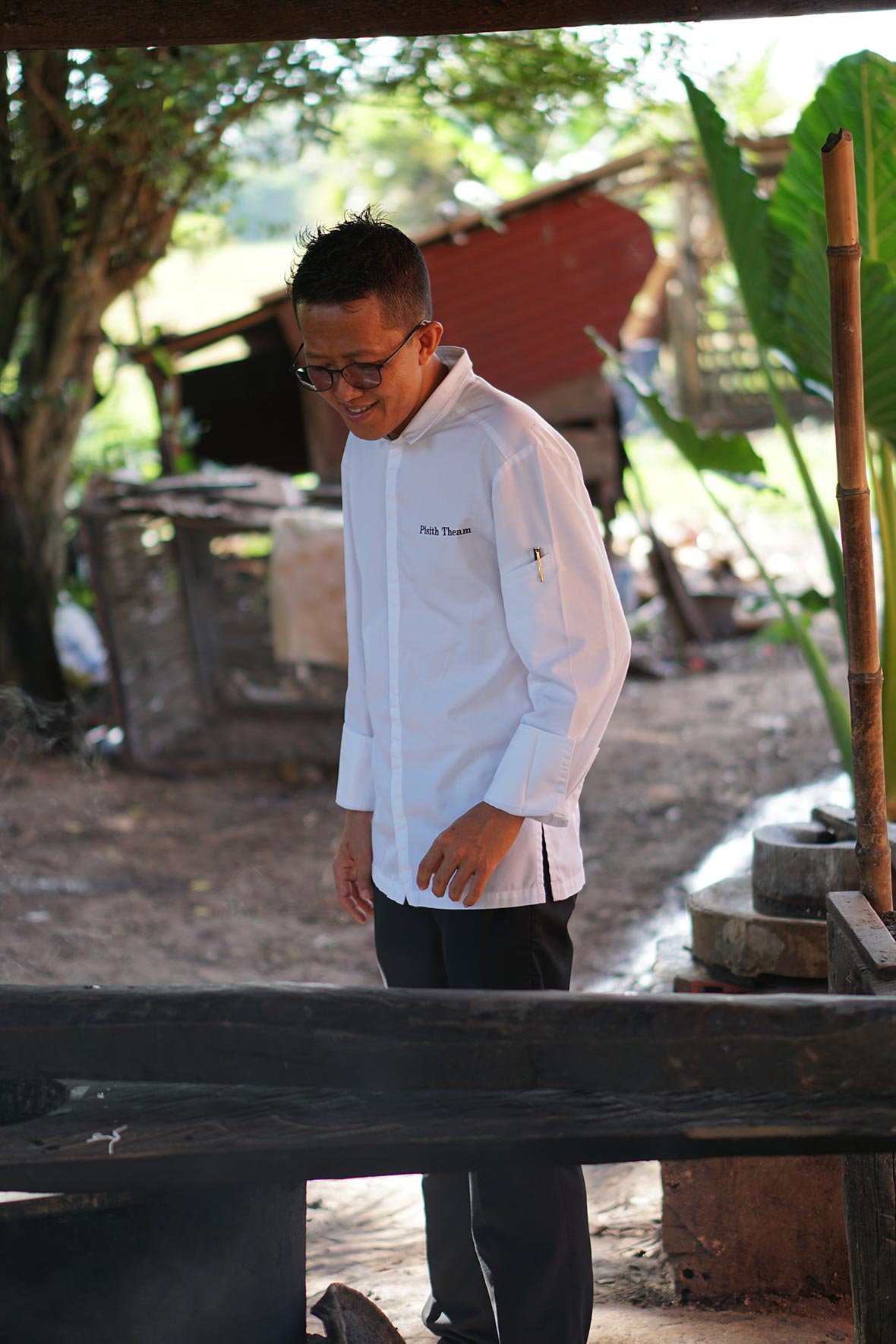
ABOVE: Chef Pisith stands over steaming num banh chok.
Heavily boiled rice is ladled onto a heavy stone mill, where it is ground into a dough. This is the most labor intensive part of the num banh chok making; one party swirls the giant mill by hand while the other ladles in more rice with every three or four revolutions. This practice may not be seen on the streets of Siem Reap when tourists buy the banana leaf adorned noodles from vendors, but this practice is done all over rural Cambodia.
When the dough is made it is then squashed and left to drain and ferment for a few days, giving it a signature sour taste.
The result of the process is a hard, firm splodge of dough about the size of a pumpkin. In order to soften this dough for the noodle-making process, it must be boiled. Steps away from the stone mill, the end result sits boiling and softening. While waiting, a chance may be taken to walk around the grounds and visit with the chickens and the family.
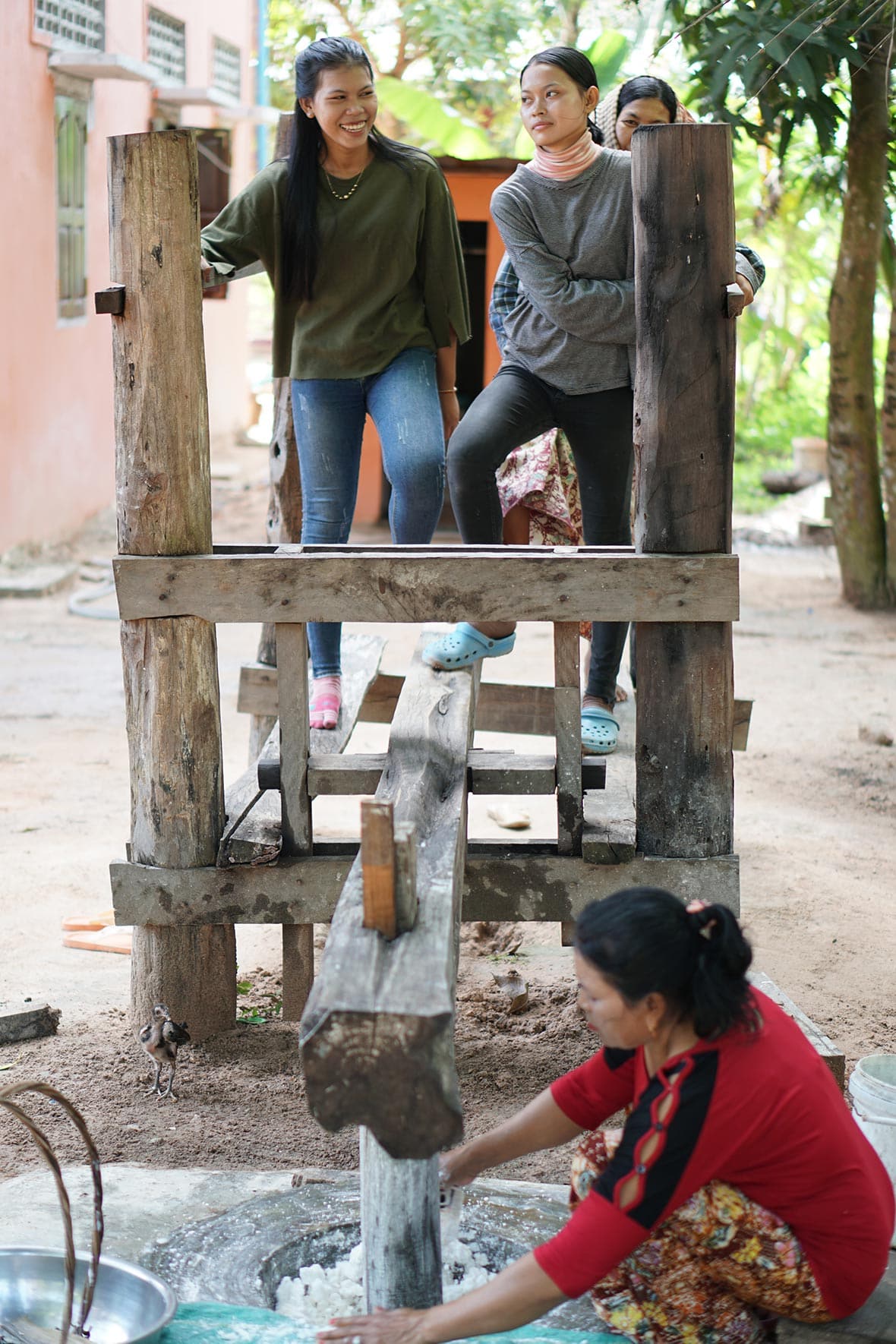
ABOVE: Hosts use their feet to power a simple machine used as a mortar and pestle to soften the hard dough of the num banh chok.
After about half an hour of boiling, the big, white ball of dough is taken to a leg-powered mortar and pestle for some final softening. Though it can be worked with one, three of the ladies climb up on a wooden pestle, and work the pedal in unison; one moves the dough around to make sure it is hit on every angle, careful to shoo away industrious chickens with a taste for unpressed num banh chok. With a well-balanced beam and teamwork, the job is more melodic than laborious – or at least it seems that way when you’re not the one doing it.
“It’s like this all over Cambodia,” Chef Pisith tells me. “Many people get factory made noodles. They are good, clean. But for Cambodia people, this is how they make it.”
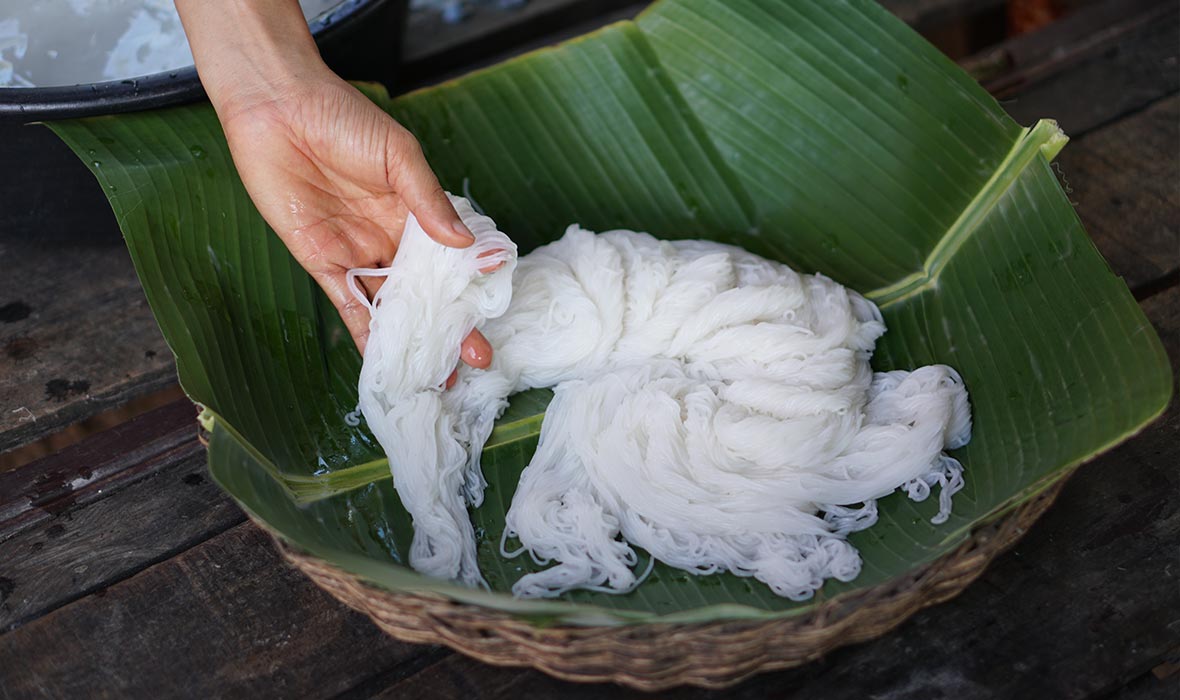
ABOVE: The num banh chok in its unaccompanied form.
There is one final step in the num banh chok process: pressing the noodles. The dough is laid in a metal container and pressed, often with a large weight; in this case, a young woman sat on the end of a long wooden board and slowly pressed the noodles. The end result is what many might expect to see after making pasta in their own home: thin strings of noodles ejected into water, pulled by hand into individual servings on banana leaves.
The journey continues on to see traditional pottery made in the Cambodian style, a diner to see how the noodles are served and seasoned, and, with Chef Pisith’s guidance, Travelogues is shown around Angkor Wat.
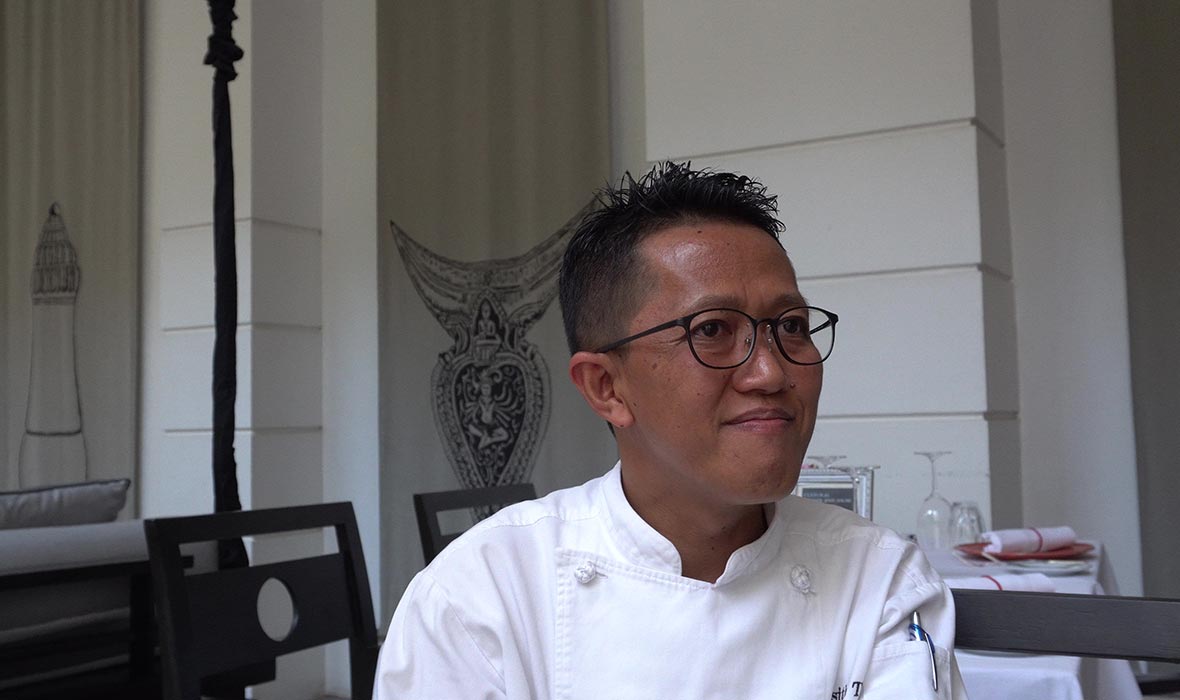
ABOVE: Chef Pisith in the outdoor dining area of the Park Hyatt Siem Reap.
The taste of num banh chok would wait until after a walk through a wonder of the world and one of the greatest ancient kingdoms in Southeast Asia: lunch at the Park Hyatt Siem Reap. In the more low-key (and with noodles certified sanitary) in The Living Room dining area, the num bohn chok is served in five-star style: garishly seasoned, well-presented, and, of course, delicious.
Chef Pisith is passionate about Khmer cuisine. “Three years, five years for the fish sauce. People talk about the age of wine. No, fish sauce. Aged fish sauce,” he says as it starts to rain. The taste at the Park Hyatt is refined, delicate, and complex, but the flavors came from a place very much like the home explored near Angkor Wat.
A planet away from the dirt lawns and roosters of the friendly home are the Park Hyatt Siem Reap’s luxury surroundings. For the discerning traveler there is much to appreciate at the Park Hyatt Siem Reap: the rooftop garden suite, two-bedroom pool suite, and of course the design and location; but it’s the care put into the food experiences that make the Park Hyatt Siem Reap, at least for this traveler, truly exceptional.

